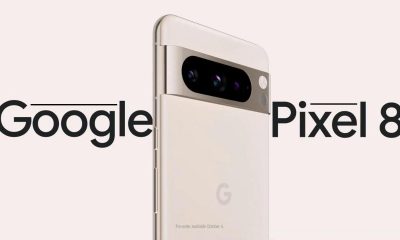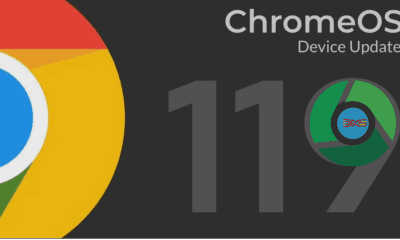News
Google Android 13 will further restrict sideloading app permissions
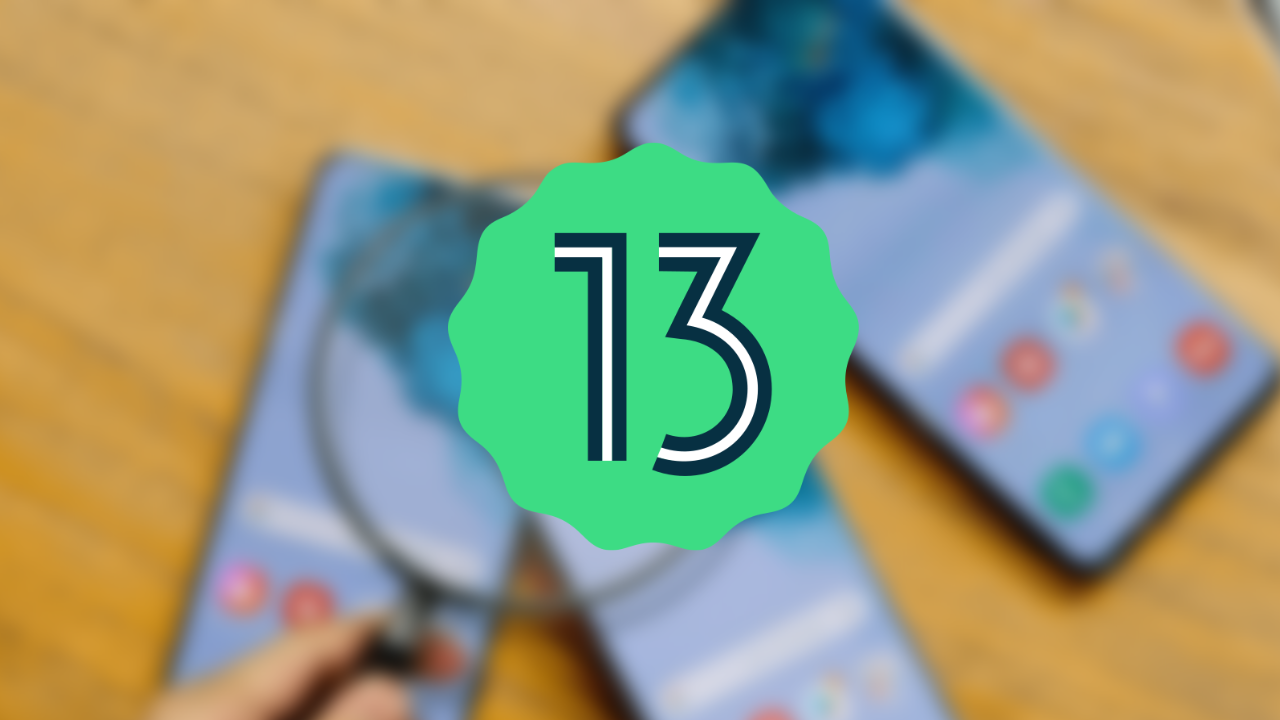
According to Android Police reports, Android’s accessibility services are designed to help users with disabilities, but the set of tools is so powerful that other apps often use it to enable compelling features. Unfortunately, accessibility services are often also portals for malware to take control of phones or gain access to personal data. In Android 13, Google is further cracking down on access to accessibility services, making it harder for sideloaded apps to gain access.
Android 13 introduces new restrictions on sideloading apps that prevent users from granting them access to accessibility services. Given that many phishing and malware attacks are carried out by tricking users into installing APKs from outside the app store, this could make it harder for bad actors to hijack an unsuspecting user’s phone.
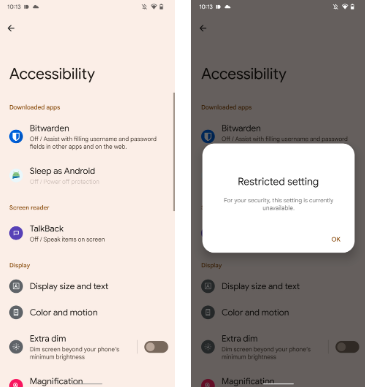
Google isn’t completely preventing sideloaded apps from using accessibility services, though. Once in the dialog stating that accessibility services for the app in question are restricted, you can activate access via the “Allow restricted settings” menu entry under the app info screen in the top right corner, so if you’re interested in using a legitimate app Advanced users of program-enhanced phones can still do so. This appears to be a vulnerability that malicious apps could circumvent by instructing users to enable restricted settings. So it’s still possible that Google will change this behavior before stable Android 13 goes live.
The new rules affect apps that users also have on the Play Store. When we sideloaded an older version of Sleep as Android from APK Mirror, which used accessibility services to prevent turning off the phone when trying to turn off the alarm, the accessibility services could not be enabled, even after updating it to the latest version available through the Play Store.
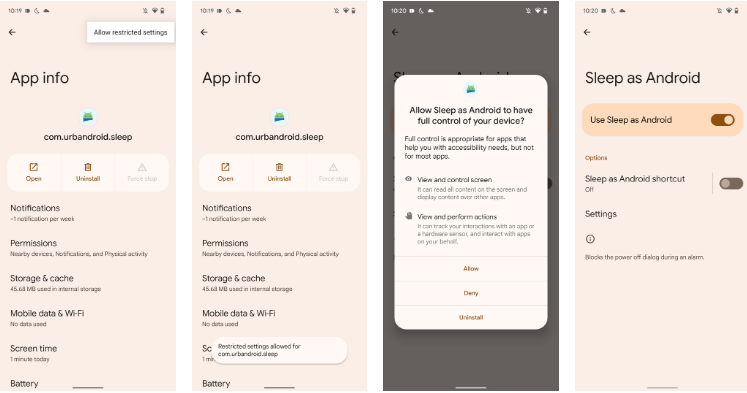
While users can still access accessibility services in Android 13 Beta 1 using the workaround described earlier, it’s an extra step for those who sideloaded apps to the latest state before the Play Store rollout.
It’s also important to note that Google only restricts sideloading apps. If you use an alternative app distribution platform like F-Droid or the Amazon App Store, you won’t run into accessibility restrictions, and Google may consider apps in the App Store to be at least somewhat screened.
At the same time, by default, apps distributed in the Google Play Store cannot use accessibility services at all, unless they are specifically created for accessibility. While other app developers can go through the lengthy process to prove to Google that their apps have been greatly enhanced by accessibility services, they can still ask for exemptions, but in general, Google strongly discourages the use of accessibility services. In fact, call recording apps are the latest to feel these limitations, and Google no longer allows them to use the accessibility service to record phone calls.
News
Samsung Expands DIY Repair Program to Include Galaxy S23, Z Fold 5, Flip 5, and More
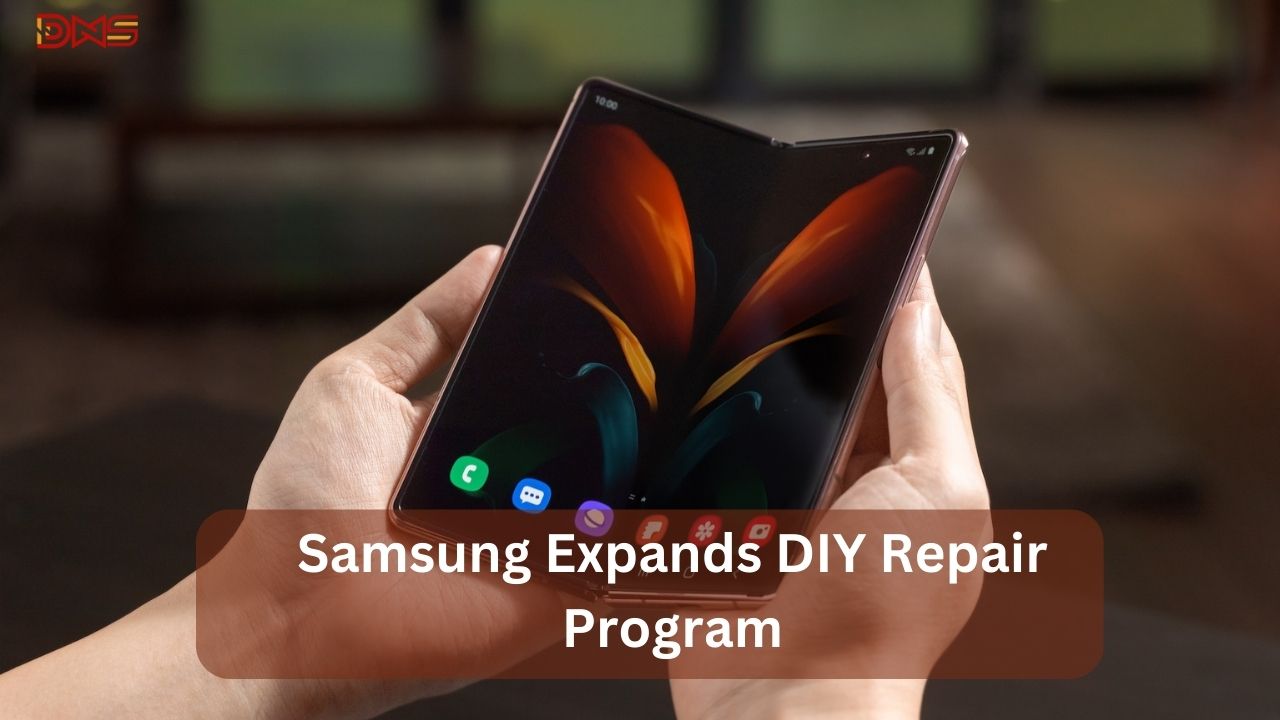
Samsung is making it easier for users to fix their devices by expanding its DIY repair program. In a recent announcement, Samsung shared that over a dozen new devices will be included in the Self-Repair program. Among them are the Galaxy Z Fold 5 and Galaxy Z Flip 5, marking the introduction of DIY repair options for Samsung’s foldable phones.
The Self-Repair program will provide users with access to parts and guides for fixing their devices at home. Samsung [Samsung Newsroom Post] is taking a step towards empowering users to take control of their device maintenance, offering support for popular devices like the Galaxy Z Fold 5 and Galaxy Z Flip 5 in this latest expansion.
Until now, Samsung mainly provided DIY repair options for its regular smartphones, tablets, and laptops. However, when it came to the more intricate foldable models like the Galaxy Fold and Flip, the company limited users to professional repair services due to the complexity of these devices.
Now, in a noteworthy move, Samsung is expanding its DIY repair support to include its foldable models, starting with the Galaxy Z Fold 5 and Galaxy Z Flip 5. This means users will soon have the option to tackle repairs at home, marking a shift in Samsung’s approach to empower users in maintaining and fixing their foldable devices.
This development follows Google’s recent introduction of DIY repair options for its Pixel Fold, though it’s worth noting that repair parts for the Pixel Fold can be relatively expensive, such as the inner screen alone costing $900. As Samsung joins the DIY repair trend for foldables, it’ll be interesting to see how this impacts the accessibility and affordability of maintaining these innovative devices.
The full list of new Self-Repair options for Galaxy devices includes:
- Galaxy Z Fold 5
- Galaxy Z Flip 5
- Galaxy S23
- Galaxy S23+
- Galaxy S23 Ultra
- Galaxy S23 FE
- Galaxy A05s
- Galaxy Tab S9
- Galaxy Tab S9+
- Galaxy Tab S9 Ultra
- Galaxy Tab S9 FE
- Galaxy Tab S9+ FE
- Galaxy Tab A9
- Galaxy Tab A9+
- Galaxy Book 2 Pro (15-inch)
- Galaxy Book 2 Pro 360 (15-inch)
Samsung is making its Self-Repair program available to more people around the world. The program is spreading to South Korea and over 30 European countries, including places like Denmark, Greece, Hungary, and Portugal. However, it’s important to note that, as of now, these new devices are not yet supported in the United States, and parts are not available from Samsung’s retail partner, iFixit.
via:- 9to5google/samsungnewsroom/ifixit
Huawei
Huawei Quick App Center gets the latest version 13.5.1.201 [APK]
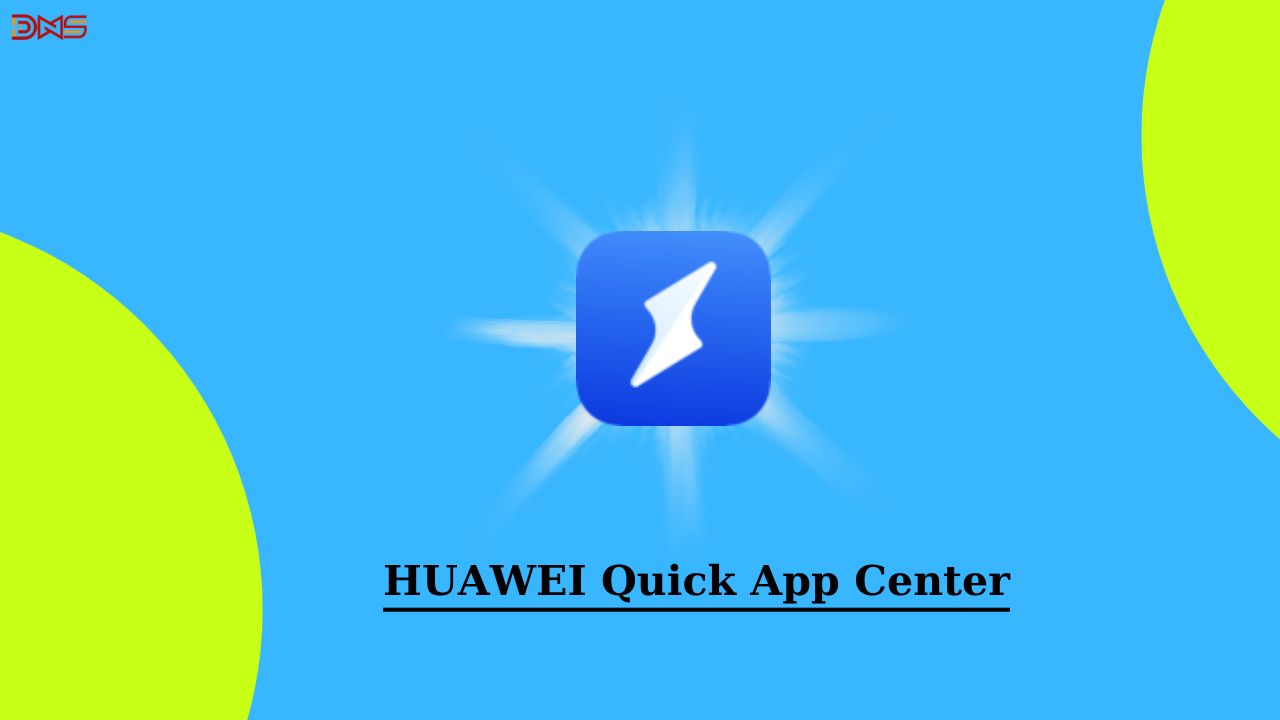
Huawei has recently revamped its pre-installed applications, including Huawei Health, Huawei Assistant, and AppGallery. The latest update introduces the Huawei Quick App Center, marking a significant change. This update reflects Huawei’s commitment to enhancing user experience and providing streamlined access to applications.
The latest update for the Quick App Center app comes with version number 13.5.1.201 and the installation size is 74.01 MB. With this new update, the company has fixed some known issue bugs. For a better app experience, you should install this latest build on your Huawei devices, below you can check the download link.
SOFTWARE INFORMATION:-Application name:
Update Version:
Update Size:
|
DOWNLOAD LINK:-
| Huawei Quick App Center V13.5.1.201 APK |
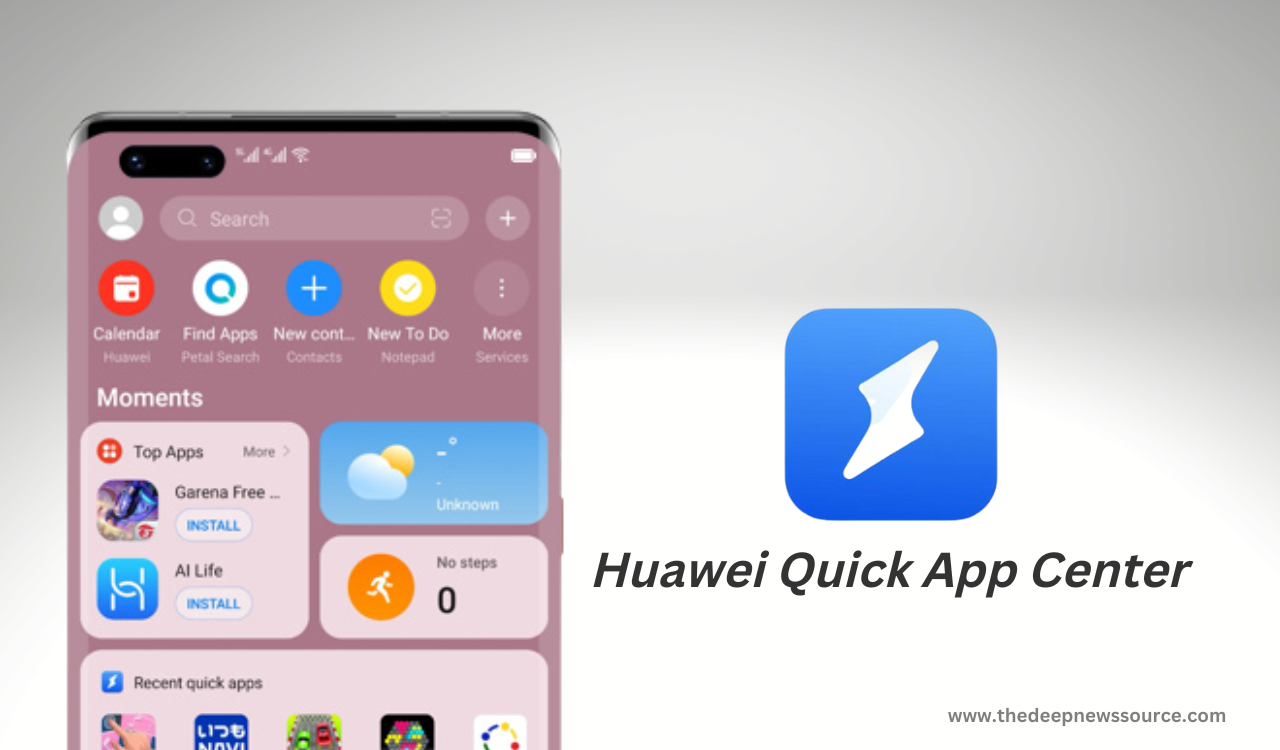
HUAWEI QUICK APP CENTER:-
As per the official introduction, the Huawei Quick app Center allows users to use and manage apps without installation. Also, this application provides the feature to create the app shortcut on your device’s Home Screen. The best part of the Quick app is that it takes up very little space on your device and it has been updated automatically to increase your work experience.
| Telegram | Google News | TwitterX |
Harmony OS
HarmonyOS NEXT Lands in 2024: Huawei CEO Sets Big Goals

Huawei’s big boss just hinted at exciting new things for their software in 2024! Expect fresh products built on their latest HarmonyOS NEXT system.
During the Fan Club (Pollen) Annual Conference 2023, Yu Chengdong announced that Huawei plans to reveal several advanced products next year. He also predicted the launch of HarmonyOS NEXT products and improved native application experiences in 2024.
The CEO didn’t share when exactly the new software and native applications would be released, but we can anticipate the official reveal to happen in early 2024.
Huawei needs to make HarmonyOS fully independent and essential without relying on Android libraries soon. Hopefully, the company will speed up its efforts in the coming days.
Many app developers, such as Alipay, McDonald’s, HiPaint, Bank of Communications, and others, have joined native app development for HarmonyOS. The goal is to create a strong app ecosystem independent of Android and iOS.
Huawei is set to offer HarmonyOS-based courses, with approval for 55 projects and over 10 universities planning to launch these courses soon.
Huawei plans to introduce apps in more than 18 categories, focusing on digital and financial sectors. According to Yu Chengdong, these native HarmonyOS applications aim to be smoother, smarter, safer, and more comprehensive compared to iOS and Android.




